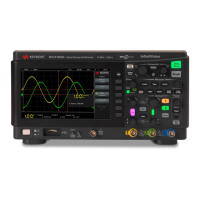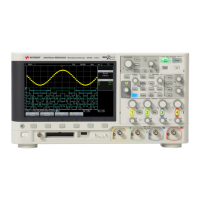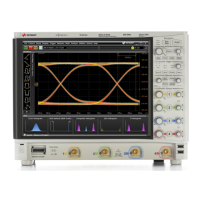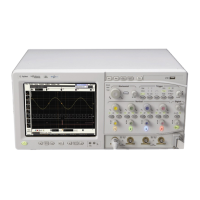114 Keysight InfiniiVision HD3-Series Oscilloscopes User's Guide
7 Digital Channels
Passive probe input impedance is generally specified in terms of a parallel
capacitance and resistance. The resistance is the sum of the tip resistor value and
the input resistance of the test instrument (see the following figure). The
capacitance is the series combination of the tip compensating capacitor and the
cable, plus instrument capacitance in parallel with the stray tip capacitance to
ground. While this results in an input impedance specification that is an accurate
model for DC and low frequencies, the high-frequency model of the probe input is
more useful (see the following figure). This high-frequency model takes into
account pure tip capacitance to ground as well as series tip resistance, and the
cable's characteristic impedance (Z
o
).
The impedance plots for the two models are shown in these figures. By comparing
the two plots, you can see that both the series tip resistor and the cable's
characteristic impedance extend the input impedance significantly. The stray tip
capacitance, which is generally small (1 pF), sets the final break point on the
impedance chart.
Figure 20 DC and Low-Frequency Probe Equivalent Circuit
Figure 21 High-Frequency Probe Equivalent Circuit
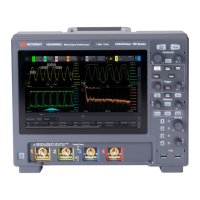
